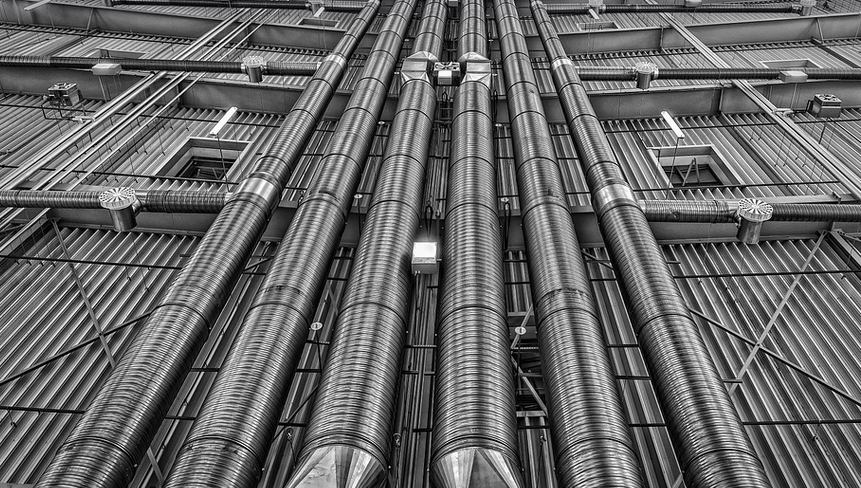
The Unassuming Power Of Rubber Tubing
A Flexible Shape-Shifter
Let’s talk about rubber tubing, those seemingly simple yet incredibly versatile tubes that play a crucial role in countless applications around us. You might have encountered them casually nestled within your car’s engine compartment or as part of a DIY project, but did you ever stop to ponder the unique property that allows them to maintain their cylindrical shape for so long?
This seemingly simple trait stems from the very nature of rubber itself. Rubber is an exceptionally elastic material, meaning it can stretch and be deformed under pressure without breaking. This remarkable elasticity arises from the molecular structure of rubber molecules, which are linked together in a way that allows them to easily rearrange themselves when subjected to stress.
The ingenious design of rubber tubing lies in its ability to resist external forces while retaining its inherent elasticity. Imagine squeezing a rubber ball – you see how it deforms and stretches under pressure? That’s the essence of rubber’s elasticity. This ability allows it to change shape without tearing or breaking.
But what precisely is this “shape retention” all about? It comes down to the way these elastic molecules interact with themselves and their environment. When external forces like pressure or stretching are applied, the rubber molecules within the tubing move closer together in certain areas, creating a slightly compressed shape. Conversely, when released, the molecules spring back into their original shape.
This process of deformation and recovery, repeated over countless cycles, creates the remarkable resilience of rubber tubing. It’s like a well-worn rubber band that can stretch and return to its original form countless times without losing its integrity.
Now, let’s delve into the fascinating phenomenon of how this cylindrical shape is maintained. This is where the magic of physical properties plays a crucial role in maintaining a constant cylindrical shape. The ability to resist deformation, even under significant pressure, is key in ensuring that the tubing retains its cylindrical form.
The secret behind this remarkable feat lies in the internal structure and composition of rubber itself. It’s not just about stretching; it’s also about how the molecules arrange themselves to ensure a constant, even distribution of force throughout the tube. This allows for consistent shape retention, even when subjected to external pressures.
Further enhancing this consistency is the presence of crosslinking in rubber. Think of it as a network of strong interconnecting bonds between the rubber molecules—almost like a spider web, holding everything together firmly and ensuring the tubing’s resilience. This helps maintain its cylindrical shape even under pressure or stress.
The interplay of elasticity and intermolecular bonding is what gives rubber tubing its remarkable ability to retain its cylindrical form. It’s not just about the material; it’s also about how those molecules work together in a harmonious, complex dance that ensures a consistent shape.
So, why should we care about this intrinsic property of rubber tubing? It’s a vital aspect in many applications, from medical devices to industrial machinery. This ability to withstand pressure and maintain its cylindrical form makes rubber tubing an ideal choice for countless uses.
Take, for instance, the automotive industry. Rubber hoses are essential components for transporting fluids, like engine coolant and fuel, safely through intricate systems in your car. The ability of these tubes to maintain their shape under pressure ensures proper flow, preventing any leakage or damage to critical components.
For plumbers, rubber tubing acts as a vital tool for conveying water efficiently within plumbing systems. Its elasticity allows it to bend and twist easily around pipes without compromising structural integrity, enabling smooth and precise fluid transport through even the tightest spaces.
Beyond these examples, the applications of rubber tubing are truly diverse. From medical devices that require a constant shape for accurate delivery of critical substances to industrial machinery where flexibility is key in demanding operations, rubber tubing’s ability to maintain its cylindrical shape has become ubiquitous. This remarkable property underscores the ingenuity and adaptability of this seemingly simple material.
So, the next time you encounter rubber tubing in a product, from your car engine to a home appliance, remember that it’s not just about an object with smooth bends and a tight tube – there is a complex interplay between materials properties and their unique ability to maintain a consistent cylindrical shape. This unassuming piece of rubber tubing has a lot more going on than meets the eye.